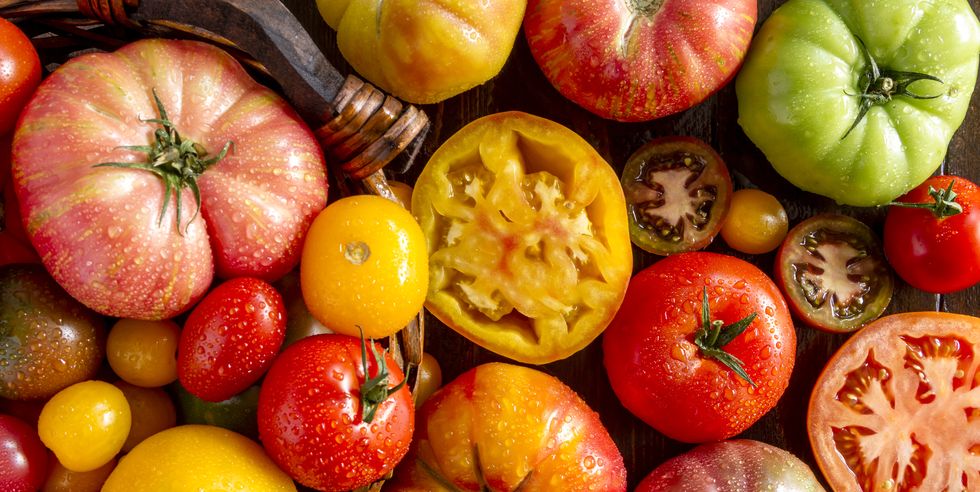Featured Image credit: Good House Keeping
Written By: Lauren Pelayo
So you’ve decided to embark on the wonderful journey of growing your own tomatoes. There’s no other vegetable with a richer history than tomatoes. Tomatoes were first seen in early Mesoamerican cultures whose name is rooted in the ancient language of Nahuatl (its original name being Tomatl; pronounced toh-mah-tle). When you grow tomatoes you’re honoring the practices of indigenous people. It’s said that Montezuma grew tomatoes and gifted them to conquistador Hernan Cortez. Although the tomatoes of that time were much different than the ones we see today it was in fact the Aztec leader who grew this juicy vegetable. Montezuma gifted Cortez the seeds of the tomato. He brought them to Europe and they spread to Asia and all over the world.

The tomato has become quite the celebrity and is used by cultures across the globe. Where would we be without the tomato? Curries would be different, salsas would lack not only flavor but texture and life would be not only bland but boring.
For those gardeners as well as farmers looking to open an emotional connection with the produce they harvest, tomatoes are an easy choice. Follow these tips to make your growing experience a success.
Soil Preparations
Like most crops it’s important to go into your planting with a strong fertilizer. Each seed will have different needs and the tomato is no exception. If you don’t have any fertilizer on hand like Microp L&G or America Natural’s Seaweed Extract, you can make your own at home using eggshells! This recipe is easy to make and helps bring down waste by using those shells that are typically tossed away or composted. According to Jessica Roy in her article How to use leftover eggshells for your plants and garden, plants require “ the minerals — mostly calcium carbonate, though also small amounts of potassium and phosphorus — will slowly break down to the point where they can be absorbed by the plant’s roots.” Clean egg shells can be composted and the nutrients will be extracted that way but if you’re not composting you can also make an egg shell tincture. Egg shells applied to the soil surface also act as a trusty repellent for pests, especially slugs.

Planting
Now that you’ve got the best fertilizer on your side it’s time to plant your tomato seeds. When growing tomatoes in your garden the first thing to do is pick a location with full-sun exposure. Tomatoes thrive in heat and require at least 6-8 hours of full sun; depending on your climate it’s best to grow them late spring and early summer to give them the heat they require. If you're living in a warmer climate like California that see’s no real signs of winter you can plant your seeds outside directly in the soil of your garden. If you live in a climate that experiences all the seasons then you can start your seeds inside your home (choose a warm area) in a deep pot. Once the seedlings have grown you can introduce them to the elements.
When prepping the soil or pot for planting it’s important to plant tomatoes deeply. The reason for this is that it allows them to have a stronger root system and will in turn produce larger tomatoes. Ideally, you should plant your tomatoes ⅔ of the way into your soil; for example if you have a 10 inch tall plant then ⅔ of it should be underground leaving about 4 inches of the top above ground.

Creating Support
Tomatoes are a heavy vegetable and require support to help them thrive. Support cages are an easy choice to prevent them from rotting, breaking, and supporting air flow. If tomatoes are left to grow on the soil they can and will produce rot. Using cages, wooden stakes, fences or even trellises can help produce a healthy harvest. This wisdom goes back in history as the Aztecs inherited their agricultural farming practices from the Olmecs. According to Professor Pete Lopez of Chicano Studies at LA Valley College “tomatoes were grown on wood sticks that were harnessed to chinampas (floating plots of land that were anchored to willow tree’s) where rows of the tomatoes could grow.”

Pruning
Pruning is a horticulture practice that is meant to actively remove part of the plant that will drain it of growing energy. This allows the plant to focus everything it's got into directly creating juicy tomatoes rather than supporting more foliage. Colleen Vanderlinden at the Spruce says, “Unpruned foliage will eventually grow into new branches that will form fruit, but most experienced growers advise that tomatoes should be pruned to not only produce larger fruit earlier in the season but also to protect the plants against pests and disease problems.”

Companion Planting & Common Pests
One of the wonderful things about tomatoes is that they like to be planted with other plants, also known as companion planting. This method of planting allows you to utilize the space of your garden as well as support healthy tomatoes. When properly chosen companion plants can promote the wellness of tomatoes as well as repel insect pests and keep away disease. According to Marie Iannotti at the Spruce, “Plants recommended for companion planting with tomatoes include amaranth, asparagus, basil, beans, borage, calendula (pot marigold), carrots, celery, chive, cleome, cosmos, cucumber, garlic, lemon balm, lettuce, marigold, mint, nasturtium, onion, parsley, sage, and squash.”

Tomatoes are particularly prone to pests and diseases making them especially challenging to see through. Having a strong repellent that’s safe for your garden's biology and for surrounding ecosystems can make the challenge of growing tomatoes a thing of the past. At America Natural we recommend two products the first is DiPel PRO DF Bt Insecticide. This product is a safe alternative to common insecticides and is used to target Hornworms. These insects are known to cause damage to the exterior of the tomato. They move fast and can consume both ripe and unripe tomatoes. Once DiPel PRO is ingested by caterpillars or larvae they stop feeding on crops and typically die within an hour.
Another way to add protection to growing crops all the way up to harvest is PureSpray Green Insecticide & Fungicide. PureSpray Green is a broad spectrum horticulture oil that can be used as an insecticide or fungicide. This low-toxicity product can be applied to a wide variety of crops for a variety of issues from aphids to powdery mildew.
Introducing tomatoes to your garden can be a smooth process by incorporating these tips into your practice. Make store bought tomatoes a thing of the past by growing your own and awakening the gardener within you.


2 comments
Loved the read. Definitely want to plant some tomatoes now!
Great read, very informative!